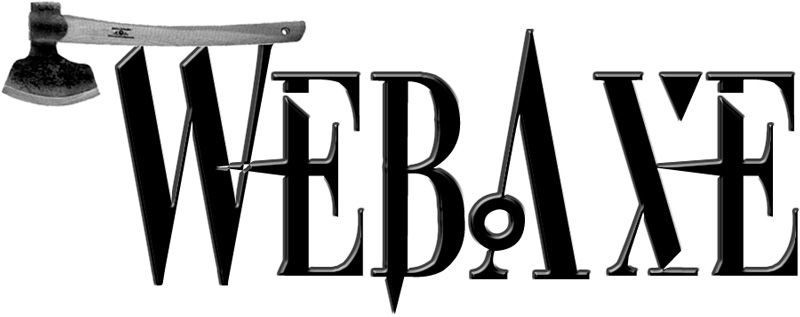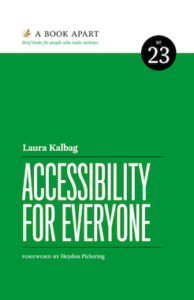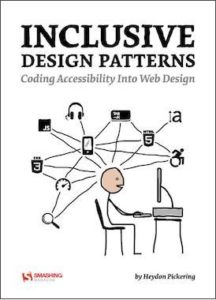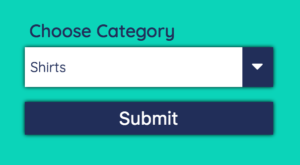Here’s a great list of accessibility books. Feel free to submit any others in comments. (Updated May 2025)
- Inclusive Design for Accessibility, by Dale Cruse and Denis Boudreau, August 2025
- Accessible UX Research (Pre-Release Jun 2025) by Dr. Michele A. Williams
- What Every Engineer Should Know About Digital Accessibility, by Sarah Horton and David Sloan, 2024
- Web Accessibility Cookbook, by Manuel Matuzović, 2024
- The Accessibility Operations Guidebook: To making accessibility work more sustainable, by Devon Persing, 2024
- A11Y Unraveled: Become a Web Accessibility Ninja, by Dimitris Georgakas, Apress, 2023
- Inclusive Design Communities, Sameera Kapila, A Book Apart, 2022
- Giving a Damn About Accessibility, Sheri Byrne-Haber, UX Collective, 2021
- Accessible Vue by Marcus Herrmann (@_marcusherrmann), LeanPub (book home page) 2021
- Inclusive Components, Heydon Pickering, Smashing Magazine, 2019
- Inclusive Design for a Digital World by Regine Gilbert, APress 2019
- Approachable Accessibility: Planning for Success, Martine Dowden, Michael Dowden, Apress, 2019
- Practical Web Inclusion and Accessibility: A Comprehensive Guide to Access Needs, Ashley Firth, Apress, 2019
- Form Design Patterns by Adam Silver (@adambsilver), 2018
- Accessibility For Everyone, by @LauraKalbag, A Book Apart 2017
- Color Accessibility Workflows, by @HelloGeri, A Book Apart 2017
- Inclusive Design Patterns—Coding Web Accessibility Into Web Design, by Heydon Pickering (@heydonworks), Smashing Magazine 2016
- Practical Approaches For Designing Accessible Websites, Léonie Watson, Chaals McCathie Nevile, Henny Swan, Scott O’Hara, Marcy Sutton, more Smashing Magazine, 2015
- Apps for All: Coding Accessible Web Applications, by Heydon Pickering (@heydonworks), Smashing Magazine 2014
- A Web for Everyone—Designing Accessible User Experiences, by Sarah Horton & Whitney Quesenbery, Rosenfeld Media, 2013
- A Pocket Guide to Colour Accessibility, Geri Coady, Five Simple Steps, 2013
- HTML5 Accessibility, by Joshue O Connor (@joshueoconnor), 2012 (older, but much of it still relevant; my review)
- For nostalgia’s sake: Web Accessibility: Web Standards and Regulatory Compliance, multiple authors, Friends of Ed, 2006
Related:
- Don’t Make Me Think, Revisited, by Steve Krug 2014. Great quotes!
- Adaptive Web Design (second edition), by Aaron Gustafson (@AaronGustafson), New Riders 2016
- Responsible Responsive Design, by Scott Jehl (@scottjehl), A Book Apart 2014
- Structured Negotiation, a Winning Alternative to Lawsuits, by Lainey Feingold (@LFLegal), 2nd edition 2021
- Mismatch, How inclusive methods can build elegant design solutions that work for all, by Kat Holmes, 2018






